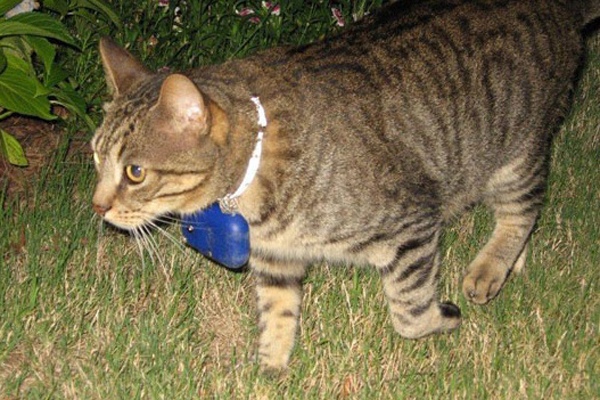
Video cameras strapped to house cats witnessed tame tabbies transforming into tigers while stalking the backyard wilderness of Athens, Georgia. The kitty-cam provided evidence that house cats allowed to roam outside killed an average of 2.1 animals per week. The risky behavior of prowling pussycats, such as crawling into storm drains and crossing busy roads was also caught on tape.
ANALYSIS: Train Your Tabby for a Tri-CAT-thalon
“We found that about 30 percent of the sampled cats were successful in capturing and killing prey, and that those cats averaged about one kill for every 17 hours outdoors,” said Kerrie Anne Loyd of the University of Georgia in the Chattanoogan. “It was also surprising to learn that cats only brought 23 percent of their kills back to a residence. We found that house cats will kill a wide variety of animals, including: lizards, voles, chipmunks, birds, frogs, and small snakes.”
Not surprisingly, birds made up 13 percent of all kills.
“If we extrapolate the results of this study across the country and include feral cats, we find that cats are likely killing more than four billion animals per year, including at least 500 million birds. Cat predation is one of the reasons why one in three American bird species are in decline,” said George Fenwick, president of American Bird Conservancy, in the Chattanoogan.
BRIEF: Why Cats, Other Carnivores Don't Taste Sweets
The cats weren’t just a threat to wildlife, they also risked their own lives. Younger male cats were the biggest risk takers. According to the KittyCam website, the most common risks taken by suburban free-roaming cats included:
Get the world’s most fascinating discoveries delivered straight to your inbox.
- Crossing roads (45%)
- Encountering strange cats (25%)
- Eating and drinking substances away from home (25%)
- Exploring storm drain systems (20%)
- Entering crawlspaces where they could become trapped (20%)
The study included an average of 37 hours of footage for each of the 55 predatory pet felines. The cat-strapped cameras were used as part of the National Geographic Society’s CritterCam project in collaboration with the University of Georgia.
This story was provided by Discovery News.


